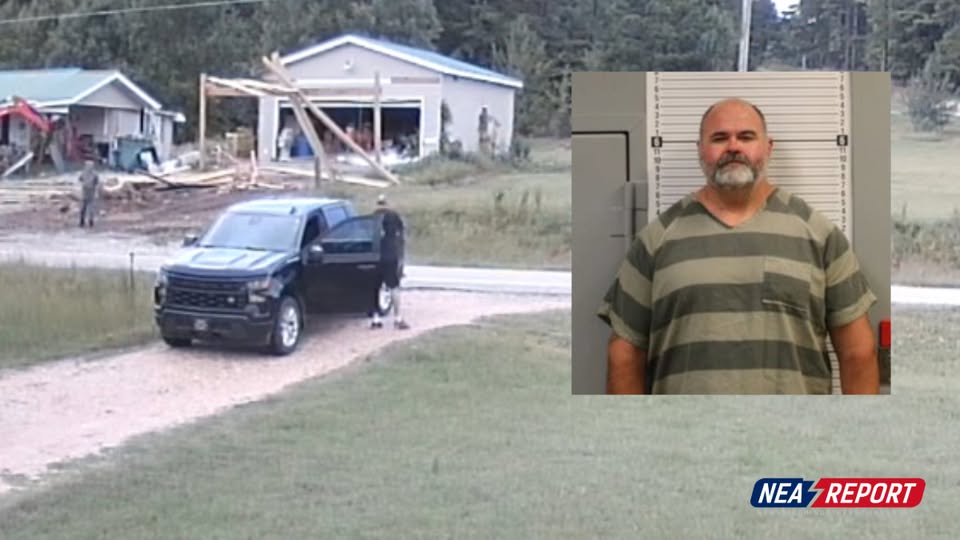Greene County Man Pleads Guilty in Dog Shooting Case, Alleges Malicious Prosecution in Aftermath
In Greene County, Arkansas, a deeply polarizing and emotionally charged case involving the shooting of a neighbor’s dog came to a formal resolution last month in court. Christopher Rannals, the man at the center of the controversy, pleaded guilty to misdemeanor cruelty to animals stemming from a 2024 incident that ignited passionate public debate both online and in the local community.
Rannals, who had originally faced felony charges in connection with the shooting, saw those charges dropped as part of a plea agreement. The Greene County court sentenced him to one day in jail—a sentence he has already served—and an additional six months suspended. While the legal process has concluded for now, the fallout continues to echo, particularly across social media where Rannals has openly criticized both law enforcement and prosecutors, alleging what he describes as a “malicious” investigation and targeted prosecution.
The Incident
The events unfolded in 2024 when Rannals reportedly shot a neighbor’s dog. The disturbing encounter was caught on camera, prompting swift outcry and drawing attention from animal rights advocates, local residents, and regional news outlets. The footage, widely circulated online, led to initial felony charges against Rannals and prompted an official investigation by the Greene County Sheriff’s Department.
While many who viewed the footage expressed outrage, others questioned whether there were mitigating factors or prior history between the neighbors and the animals involved. According to Sheriff Brad Snyder, there had indeed been previous complaints involving the dogs. In a statement to NEA Report, the sheriff acknowledged that “the dogs had previously been a problem,” referencing past calls or concerns reported to authorities. However, Snyder was careful to clarify that “they weren’t the problem in the incident caught on camera,” distancing this specific event from prior complaints and pointing to the actions of Rannals as the primary cause for legal concern.
Plea and Public Reaction
The plea agreement marked a turning point in the case. With the reduction of charges from a felony to a misdemeanor, the sentencing was seen by some as lenient, especially by those advocating for stronger penalties in animal cruelty cases. Yet others viewed the outcome as just, citing the complexities of the situation, including the prior tensions between neighbors and the behavior of the animals.
Rannals, for his part, did not fade quietly from the public spotlight following the court’s decision. In a series of pointed Facebook posts, he accused the sheriff’s office and county prosecutors of conducting a “malicious” campaign against him. He alleged that the investigation was biased and politically motivated, though he has yet to present any formal legal claim or evidence in support of these assertions. His comments have further divided opinion, with some social media users rallying behind him, while others have condemned his actions and called for greater accountability.
Broader Implications
The case has raised broader questions in Greene County and beyond about how animal cruelty is addressed in the justice system, especially in cases where neighborhood disputes are involved. It also highlights the power—and pitfalls—of social media in shaping public opinion and influencing the narrative surrounding criminal cases.
Sheriff Snyder has not directly responded to Rannals’ online accusations but has stood by the integrity of the investigation, reaffirming that the department acted in accordance with the law and based on the facts of the case. NEA Report’s coverage also emphasized the independent nature of the evidence, including the video footage that was critical to the misdemeanor plea.
Conclusion
While the legal matter surrounding the shooting of the dog has concluded in court, the controversy it stirred remains very much alive in the community. For some, justice was served through the court’s measured approach. For others, the incident serves as a painful reminder of the emotional toll and moral outrage that often accompany cases of animal cruelty.
As Greene County moves forward, residents and local authorities alike may continue to wrestle with the questions this case has brought to light: How do we balance property rights, personal safety, and compassion for animals? And when public perception and the legal system collide, whose voice ultimately prevails?

Leave a Reply